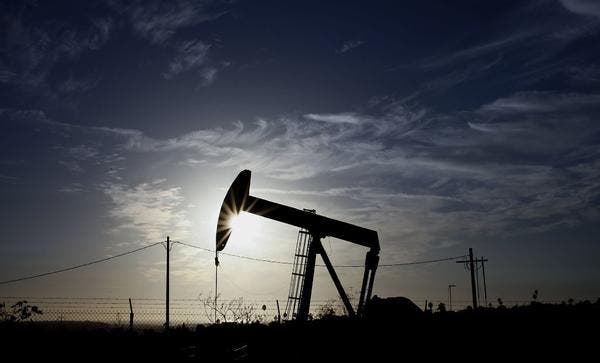
Since the turn of the industrial revolution, round the 1750’s, the share of methane gas in the atmosphere has nearly doubled. Methane molecules are roughly 26 times more potent than carbon dioxide in trapping heat, and thus they’re one of the most dangerous types of emissions. Burning methane, however, is a whole lot better (actually less worse) than burning coal, since the punch per molecule is better, energy-wise. Burning natural gas isn’t the only source of carbon emissions however – a troublesome aspect that we need to consider is leakage of natural gas itself.
Paul Wennberg of the California Institute of Technology (Caltech) suggests that there may be a whole more methane leaking into the atmosphere than it is currently believed. His analysis suggests that, at least in the LA basin where his research was concentrated, significant amounts of natural gas is being leaked into the atmosphere following oil drilling and piping loses.
A heavy molecule that keeps heat for itself
Fully one-third of the increase in the atmosphere’s ability to retain radiation since 1750 is estimated to be due to the presence and effects of methane. In fact, the presence of methane has a triple negative effect on the atmosphere, in the state it is today of course (the atmosphere can be too cold or too hot, there are times when you would want more methane – we are far from experiencing this demand today).
“First, like other greenhouse gases, methane works directly to trap Earth’s radiation in the atmosphere. Second, when methane oxidizes in Earth’s atmosphere, it is broken into components that are also greenhouse gases: carbon dioxide and ozone. Third, the breakdown of methane in the atmosphere produces water vapor, which also functions as a greenhouse gas. Increased humidity, especially in the otherwise arid stratosphere where approximately 10 percent of methane is oxidized, further increases greenhouse-gas induced climate change,” states the CalTech press release.
Wennberg and colleagues began their analysis of the atmosphere in the vicinity of the LA basin in 2008. Measurements were taken from the troposphere, the lowest portion of Earth’s atmosphere, via an airplane flying less than a mile above the ground over the area. The chemical signatures of the samples suggest that there are was more methane gas than previously estimated, raw methane gas.
Is natural gas a climate change mitigating solution?
It’s rather difficult to assess the sources of methane gas, or rather the predominant sources of methane. It can come anywhere from landfills to wetlands to petroleum processing, and knowing where the gas found in the atmosphere originates can have long lasting effects in mitigation efforts.
[RELATED] Man-made molecule is 7,400 worse than CO2
Methane used for fossil fuel purposes is accompanied by ethane – the second most common component of natural gas – while bio occurring methane is not (from livestock, wastewater etc). The samples the Caltech researchers gathered have methane to ethane ratios that are strikingly similar to those found in the natural gas supplied by he Southern California Gas Company.
The company reports piping loses of 0.1 percent, however the analysis suggests that he source of methane from either the natural-gas infrastructure or petroleum production is closer to 2 percent of the total gas delivered to the basin. That’s twenty times more than the reports read. One possible way to reconcile these vastly different estimates is that significant losses of natural gas may occur after consumer metering in the homes, offices, and industrial plants that purchase natural gas. This loss of fuel is small enough to have no immediate negative impact on household users, but cumulatively it could be a major player in the concentration of methane in the atmosphere.

It’s difficult to tell things for certain without putting things into context, and Wennberg and team want to build a really thorough context with their Megacities Carbon Project. The scientists intend on performing the same type of measurements across most of the big cities of the world like Hong Kong, Berlin, Jakarta, Johannesburg, Seoul, São Paulo, or Tokyo. These metropolises are roughly responsible for 75% of the world’s carbon emissions, despite they only occupy 3% of the world’s landmass.
A great deal of attention has been directed towards the possibility of massively switching to natural gas, instead of using coal for power and heat generation. Like I said earlier, methane has a much more potent energy heating value, while its carbon emissions are lower at the same time. Looking at the effects of end user combustion is far from enough. There’s a whole process and life cycle that needs to be considered, and if in this process there happens to be methane leakage far greater than previously believed, this definitely needs to be taken into consideration.
“You have to dig it up, put it in the pipe, and burn it without losing more than a few percent,” Wennberg says. “Otherwise, it’s not nearly as helpful as you would think.”
The study was reported in the journal Environmental Science & Technology.






